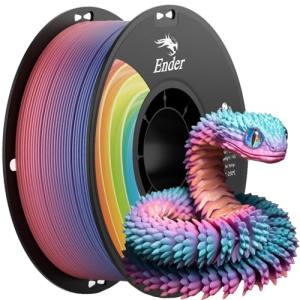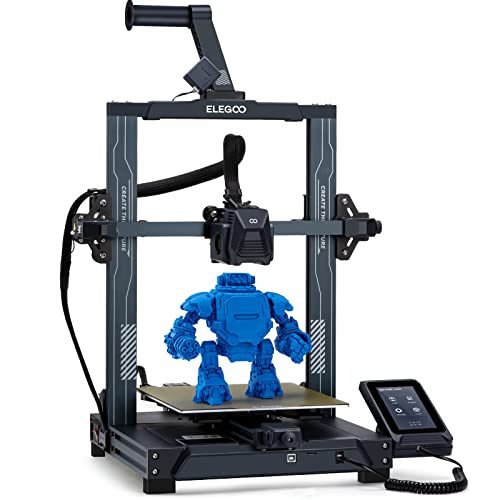Ready to dive into the world of 3D printing? Whether you're a hobbyist, a designer, or just someone who loves to create cool stuff, finding the right printer can make all the difference. Here are some of the best 3D printers that will spark your creativity and help you bring your ideas to life.
The Creality Ender 3 V2 is a fantastic pick to kick things off. It’s user-friendly, affordable, and packs a lot of features for the price. The print quality is impressive, plus it has a large print area, which means you can make bigger projects without a hitch. Lots of people rave about how easy it is to set up, so you’ll be printing in no time!
If you're ready to step up your game, check out the Prusa i3 MK3S+. This printer is known for its reliability and superb print quality. It comes with smart features like a power recovery mode and a color LCD screen. Plus, the community behind Prusa is super supportive, with tons of resources and tips available for beginners and pros alike.
For those who want a more advanced experience, the Anycubic Photon Mono X is a solid choice. This resin printer offers incredible detail and precision, making it perfect for miniatures or intricate designs. While it might take a little practice to get used to the resin printing process, the end results are totally worth it. Just be prepared for some post-processing work!
These printers are all fantastic options for unleashing your creativity. They each come with their own set of features that cater to different levels of expertise and project desires. With the right 3D Printer Reviews, you can find the perfect match to start creating amazing projects that you'll be proud to show off!
Features to Look for in a 3D Printer
First up, consider the print volume. This is the size of the objects you can create. If you want to make big, impressive items, you’ll need a printer with a larger build area. Most beginner printers handle decent size projects, but if you aim for something ambitious, check the specs carefully.
Next, look at the print quality. Some printers leave you with rough, bumpy surfaces, while others produce smooth, detailed finishes. Pay attention to the layer height and resolution advertised. A printer that can do low layer heights (like 0.1 mm) usually gives better detail, so if you’re serious about your designs, this is a must-check feature.
Don't forget about the materials they can handle. PLA is popular for its ease of use, but if you want to experiment with stronger materials like ABS or flexible filaments, make sure the printer can handle those too. Many 3D Printer Reviews will highlight the materials compatibility, so keep an eye out for that.
Lastly, ease of use is crucial, especially if you’re just starting out. Look for features like touchscreen navigation and easy setup. A straightforward software interface will save you a lot of headaches. Some printers even come with great community support or beginner-friendly resources, which is a huge bonus! Making a smart choice in these areas will help you get started on your creative journey without too much stress.
TINA2Plus High-Speed FDM 3D Printer with WiFi
Experience fast and effortless 3D printing with TINA2Plus, featuring WiFi connectivity for easy control from anywhere
Product information
$259.99
Product Review Score
4.85 out of 5 stars
69 reviewsProduct links
Easy Tips for Getting Started with Printing
Getting started with 3D printing can feel a bit overwhelming, but it doesn’t have to be! Here are some easy tips to help you dive in and get printing in no time.
First things first, pick a reliable 3D printer. When reading through 3D Printer Reviews, look for models that suit your needs, whether that’s for hobby projects or more serious creations. Consider factors like build size, material compatibility, and ease of use. There are plenty of great options out there that won’t break the bank.
Next, familiarize yourself with slicing software. This is what turns your 3D model into something your printer can understand. Many printers come with recommended software, but you can explore others too. Some popular choices are Cura and PrusaSlicer. They’re user-friendly and have tons of tutorials available online.
Don’t forget about test prints! Start with simple designs to get a feel for your printer and settings. You can find a ton of free models online. Just search for “test print 3D model” and you’ll have plenty to choose from. This will help you learn how to adjust things like temperature and print speed, leading to better results in the long run.
Lastly, connect with the community. Forums, social media, and local maker groups are great for sharing tips and tricks. You’ll find a wealth of information from fellow 3D printing enthusiasts. Plus, they can offer insights that you won’t always find in 3D Printer Reviews. Remember, you’re not alone on this adventure!
Rainbow PLA+ Filament for 3D Printers 1kg
Vibrant colors and strong performance for all your 3D printing projects
Product information
$25.99 $21.99
Product Review Score
4.42 out of 5 stars
102 reviewsProduct links
Common Problems and How to Fix Them
Every 3D printer has its quirks, and sometimes you may run into a few common problems. But don't worry! Most issues are pretty straightforward to fix. Let's dive into some of these pesky challenges and how you can tackle them.
Stringing: One of the most frustrating problems is stringing, where you find thin strands of plastic between your printed parts. To fix this, try adjusting the temperature settings. Lowering the nozzle temperature often helps. You can also enable a feature called "retraction" in your slicer settings. This pulls the filament back into the nozzle when moving between parts, reducing stringing.
Uneven Layers: If your prints come out with uneven layers or a wavy surface, it might be a bed leveling issue. First, check that your print bed is level and clean. Regularly calibrating your printer helps maintain a smooth surface. You might also want to look for loose belts or parts that could be causing the inconsistency.
Failed Prints: Nobody likes seeing that failed print! If your print suddenly stops or doesn’t stick to the bed, it could be a bed adhesion problem or the wrong settings for your filament type. Try using a glue stick or painter's tape on the bed to help your print stick better. Also, always refer to the best 3D printer reviews to ensure you dial in the right settings for your materials.





